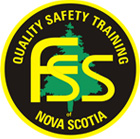Working in Extreme Heat
Hazards Identified
Exposure to excessive heat (leading to increased core temperature), fatigue, loss of judgement, heat cramps, heat exhaustion, heat stroke and dehydration, sunburn
Hazard-Specific Personal Protective Equipment
Skin, head and eye coverings to protect from sun
Hazard-Specific Training
First Aid for Exposure to Excessive Heat
Safe Work Practice
- Note: When the body core temperature is raised, loss of judgement may occur.
- Provide shade from the direct sun whenever possible.
- Cover skin and head when it is necessary to be in the direct sun.
- To avoid sunburn on exposed skin, use a sun block with a SPF of 15 or greater.
- Wear dark glasses to protect eyes from the sun. Note that safety glasses come in tinted shades.
- Provide frequent breaks in cool or shaded areas. Increase the number and length of the breaks with increasing temperature and greater workload.
- Provide abundant cool water for employees working in hot conditions. Encourage employees to drink frequently. Do not provide salt tablets.
- Be familiar with the signs of heat cramps, heat exhaustion and heat stroke. Monitor employees for any signs of distress and remove from further exposure to heat at the first sign of being affected.
- Adjust break periods in extreme conditions.
Regulations, Standards and References
First Aid for Excessive Heat
ACGIH Threshold Limit Values for Heat Stress
